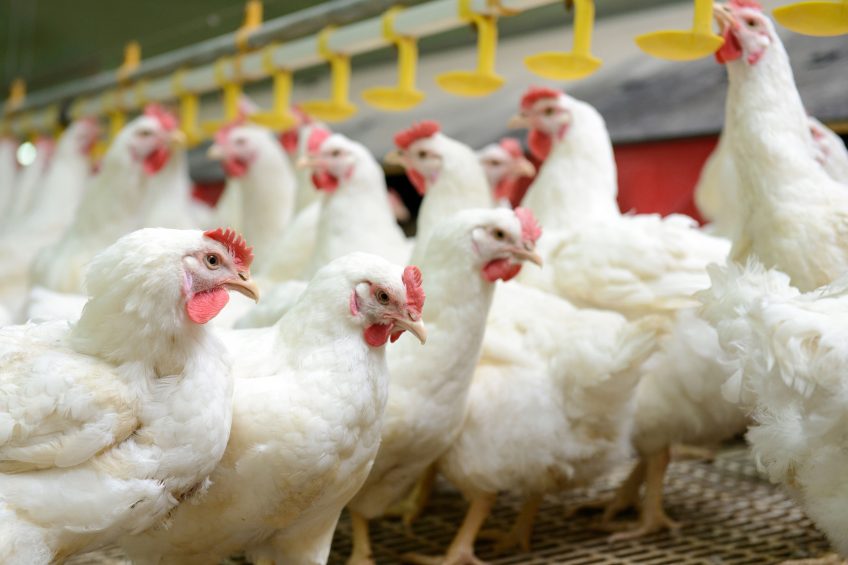Europe-wide poultry health project draws to a close

The largest European Commission funded pig and poultry research project draws to a close in November. Poultry World recently visited Newcastle University to talk to the PROHEALTH project coordinator Professor Ilias Kyriazakis.
2 patents, up to 45 peer-reviewed publications, a range of policy briefs and best practice guidelines for the European Commission and a website packed with information are just some of the outputs from the ProHealth project.
Professor Ilias Kyriazakis, professor of animal health and management at Newcastle University and project coordinator, said he believed the link between academia and industry across Europe – forged on past alliances – has been incredibly beneficial.
“The EU has been very keen for us to produce outputs relevant to the industry and so far we’ve produced more than 25 peer-reviewed papers, which is expected to rise to 45. But we’ve also set up a website, which industry has found so useful that it will provide funding for it to stay live for a further 2 years, until December 2020. And we’ve also produced newsletters and disseminated information at conferences and symposiums,” he told Poultry World.
“We are also obliged to produce policy briefs and best practices for the relevant stakeholders. The poultry policy briefs will cover methods of control of production diseases among broiler breeders, biosecurity in different systems across Europe and consumer preferred methods of control for production.
“The best practice guidelines will cover enrichment, assessment of vitamin D requirements in poultry and guidelines for biosecurity control.” 2 patents have been filed following research into genetic markers for production diseases in broilers, which was particularly exciting, he added.
While the final report’s deadline is not due until January 2019, Prof Kyriazakis said evaluation of the annual reports produced for the European Commission had been positive and MEPs had agreed to debate the project in Brussels on 26 November, ahead of the two day symposium in Ghent on 27-28 November.
The size of the €12m grant and the fact that the project has been coordinated in the UK are 2 interesting factors given recent debates on budgetary pressures in the EU and Brexit.
Prof Kyriazakis said recent grant support had been much closer to € 5m – € 6m and that while Brexit had not reared its head during the research work, it was very unlikely that the UK would be asked to lead this type of research again once it was outside the EU.
“If I was a Dutch professor I would certainly be asking why would I want a UK coordinator? My hope is that the UK recognises the benefits of collaborative work and continues to fund research.”
Public perceptions of poultry production diseases and their control Scant public knowledge of modern farming methods in the pig and poultry sectors, due to the disconnection between consumers and modern agriculture, were uncovered as part of a PROHEALTH survey across 5 European countries. Consumers across all 5 nations (Finland, Germany, Poland, Spain and the UK) were generally unfamiliar with farming practices, due in part to being unclear as to how the food they purchased had been produced. The leading areas of concern were over intensive production systems, which were seen as unfavourable, especially in relation to increased animal stress and risks of animal diseases. Specific concerns were raised about prophylactic antibiotic usage, even though the survey emphasised that this is banned in the EU. Survey respondents were asked to rate the acceptability of ways to mitigate production diseases, involving the use of medicines, vaccination, genetic selection and food supplements. The most preferred interventions involved changes to housing design, enhanced hygiene, reduced stocking densities and providing enrichment materials, which were perceived as being more natural and less invasive than others. |
ProHealth in numbers The 5 year ProHealth Sustainable Intensive Pig and Poultry Production project has been the largest EU funded project of its kind. It began on 1 December 2013 and runs until 30 November 2018. Its objectives have been to:
Total funding – € 12m with € 9m from EU |
Danish systematic review of environmental enrichments to improve leg health in broilers A Danish review of 62 studies of 6 types of environmental enrichment and whether they improve leg health has found evidence that some can boost broiler welfare. |
Vitamin D requirements during exposure to Coccidia Levels of vitamin D supplementation, set by the European Commission almost 30 years ago, may now be too low because of the changing nature of the fast-growing broiler over the past 3 decades. |
ProHealth research roundup Escherichia coli infections in broiler production and the role of broiler breeders
Foot health in broiler breeders
Production diseases: The costs to poultry producers
Composition of Gut Microbiota in relation to salmonella enteritidis infection
|













